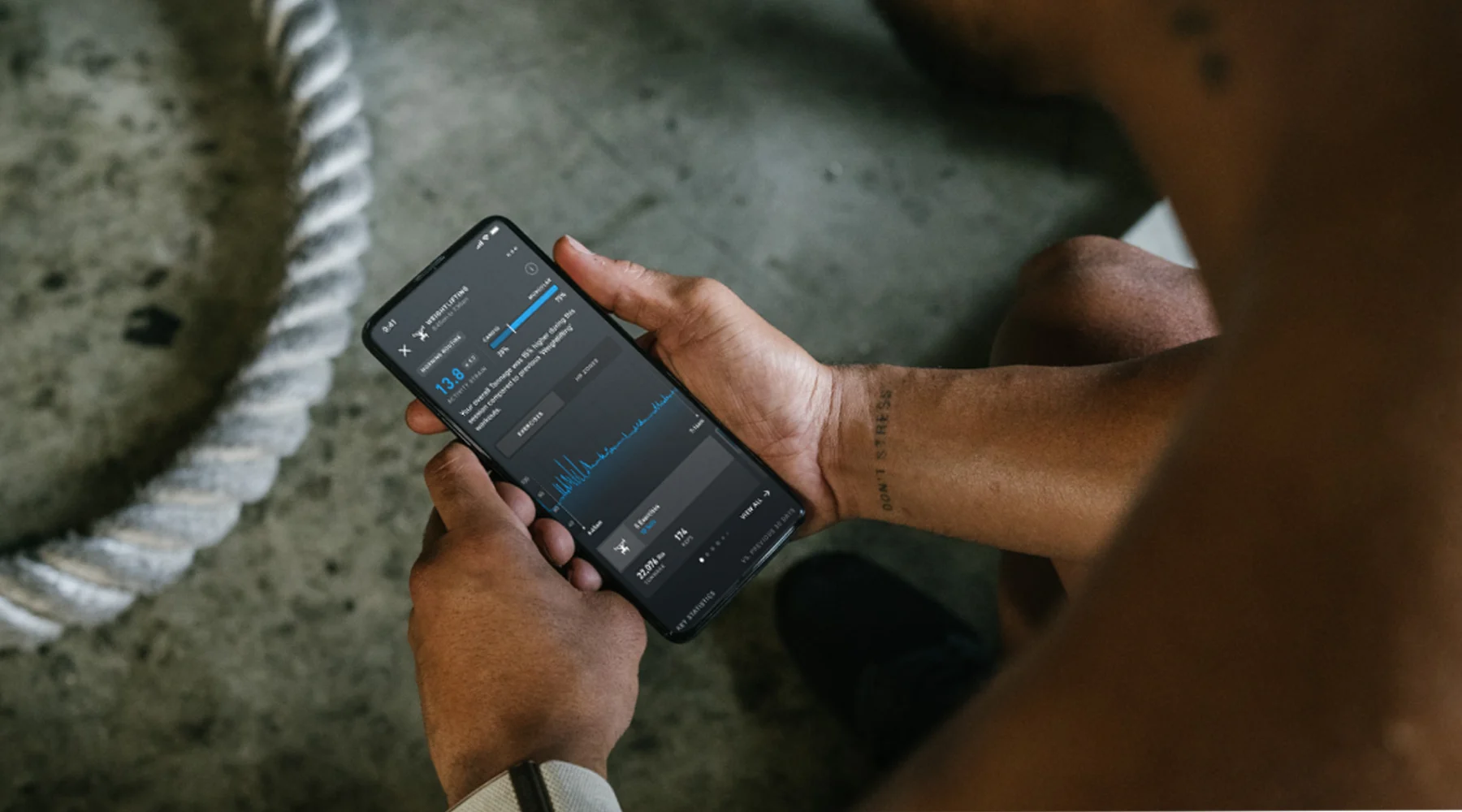Topics
- Article
- App & Features
- Strength Training
The Research and Development Behind Strength Trainer

Discover how WHOOP Labs developed the all-new feature Strength Trainer, along with an algorithm to calculate muscular load.
The Need For Measuring Muscular Load
WHOOP members have come to know their Strain scores like what they had for breakfast – it’s part of their daily routine. Strain and Day Strain represent the total cardiovascular load during an activity and over the duration of a full day. Strain is a great general measure of physical stress because the score is directly based on heart rate.). However, if you’re a WHOOP member who is primarily focused on weightlifting and strength training, you may have noticed that your Strain doesn’t always match the effort you put in because weightlifting predominantly stresses your muscles and not your heart. Strength training is primarily driven by the neuromuscular system and the musculoskeletal system. In order for WHOOP to truly evaluate the comprehensive strain that you put on your body regardless of activity, we needed to develop a better way to quantify muscular load – the measured amount of stress put on muscles, bones, joints, and tissues.
Building The Algorithm To Measure Strength

This game-changing advancement is an evolution of WHOOP technology built through WHOOP Labs, the internal research wing that conducts scientific studies on a daily basis, and PUSH, a velocity-based training solution acquired by WHOOP. PUSH spent nearly a decade developing hardware and software to track strength training in high performance settings around the world. The first step in the development process involved integrating PUSH algorithms into WHOOP hardware. Strength Trainer was then tested in WHOOP Labs for over a year with thousands of hours to study the impact of load on the human body. Studies were made up equally of men and women, and of all skill levels. For the initial validations, the studies required ~250 repetitions of each exercise, and each study asked 20 participants to complete a minimum of a variety of movement patterns, including squats, deadlifts, Olympic lifts, thrusters, vertical and horizontal rows, and presses. Accessory and bodyweight movements were also included, like push ups, pull ups, dips, inverted rows, curls, and bent over rows, as were exercises that used other equipment like kettlebells, dumbbells, and medicine balls. In total over 10,000 repetitions were collected for the initial validations. After validating that WHOOP could effectively track strength training exercises, the team then focused on calculating a new metric that could properly capture the effort and load on the body during resistance training activities. This metric had two primary requirements: (1) it needed to use the inertial motion unit (accelerometer and gyroscope in the WHOOP sensor) to produce the data and (2) it needed to be grounded in science and the first principles of biomechanics.
A New Metric: Muscular Load
Historically, weight training has been measured with basic mathematical methods using external load, which is the amount of weight being used during an exercise. The two main components most often used are volume and intensity. Volume represents the “how much” part of weightlifting, and intensity represents the “how hard.” This is typically measured by the percentage of the maximum amount of weight an individual can lift, also known as One Repetition Maximum (1RM). For example if you can lift 100 lbs, 80% of your 1RM will be 80 lbs. The closer you lift to your maximum, the higher the intensity of the lift. Using these classical measures gives a basic understanding of the overall external loading, that is the amount of load occurring outside of the body. However, these measurements don’t paint a full picture, as they lack details about the specific motions of the exercise, the amount of body mass used during those motions, and how fast the lifter is moving. It doesn’t take into account the specific motions of the exercise, or the amount of body mass used during those motions. Lifting 100lbs during a bench press vs. lifting 100lbs produce different impacts on the body, and lifting 100 lbs slowly versus quickly produces two different adaptations and would fatigue the lifter differently. Perhaps the biggest limitation in using this classic measure is that it fails to account for any biological signal, meaning there is no data coming from the human body, just knowledge of the external load. Muscular load measures movement and its underlying physics using the accelerometer and gyroscope sensors in WHOOP, and combines these signals with advanced biomechanics and mathematics. This metric includes both volume and intensity components.
- Volume is measured similarly to traditional volume load, but it incorporates effective mass. It takes into account your body mass, but only includes the parts of your body that are moving and doing the work. For example, a full body exercise like a squat or clean and jerk will have more musculoskeletal load than a bench press.
- Intensity quantifies how much effort or exertion you are giving to complete the lift. The closer you are to lifting your maximum, the higher the intensity of the lift is.
Lastly, the team wanted to align muscular load with the current WHOOP Strain algorithm. WHOOP now accounts for both the cardiovascular and muscular load of your workouts to give a total strain score. For anyone who strength trains, this adjustment to the strain algorithm will help with more effective training and recovery. As Strength Trainer learns your baselines, upper limits, and lower limits, it will give you more individualized and accurate muscular load values, and intensity and volume will adapt to you over time.
Final Validations of Strength Trainer
The final piece of the validation process was to assess the reliability of the new measures using WHOOP. Participants came into WHOOP Labs and completed the same workout multiple times. The study found that muscular load had a 97% correlation in results from the first workout to the repeated workout. Ratings of perceived exertion only had an 85% repeatability score. This showed that the new muscular load metric gave users a repeatable measure of their strain when completing strength training activities. Strength Trainer was a collaborative effort from many teams within WHOOP, including: Data Science, Sport Science, Signal Processing, Product, Software, and Design. This all-new feature will help members unlock the ability to track their strength training workouts, and measure muscular load to ultimately get the credit they deserve in their Strain scores.